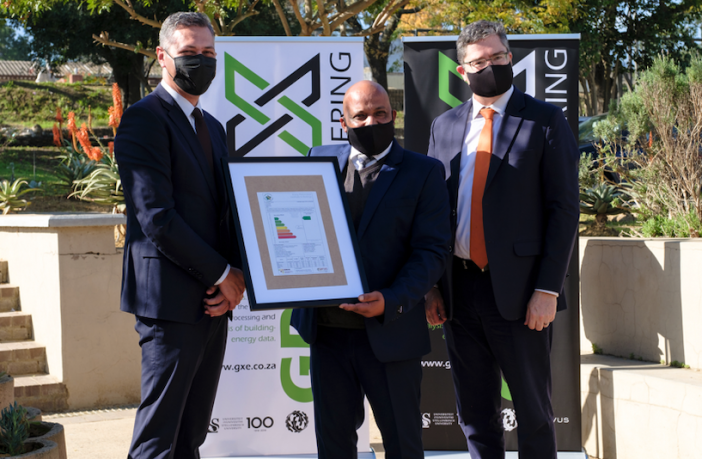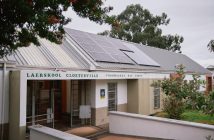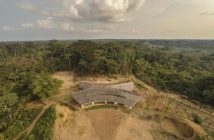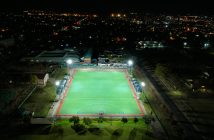- Stellenbosch University (SU) spinout company GreenX Engineering’s initiatives to help equip Cloetesville Primary School in Stellenbosch with energy-saving technology ensured that it became the first school in South Africa to receive an Electrical Performance Certificate (EPC).
- The school received an A rating for electrical consumption of 17 kWh per m².
The EPC is the culmination of hard work and dedication, a great team effort and leaping over the final hurdle in completing his PhD, says Managing Director of GreenX, Jason Samuels.
Under the supervision of Thinus Booysen, professor in electrical and electronic engineering, and Saartjie Grobbelaar, associate professor in industrial engineering, Samuels is doing his PhD focusing on schools and their energy usage; creating methods to reduce their consumption and systems to manage the school more efficiently. Samuels, Booysen and Grobbelaar, together with entrepreneur Mario Roos established GreenX Engineering with the help of Innovus Technology Transfer, SU’s innovation division. Booysen and Grobbelaar are both non-executive directors of GreenX Engineering.
Related news: Building energy performance reporting is now mandatory in South Africa
“GreenX Engineering’s creation can be traced back two years ago when I heard Prof Booysen on the radio talking about his involvement in projects to help schools in and around Stellenbosch and Paarl save water and electricity. I realised that my specialised lighting and electrical maintenance company could become an essential partner to Booysens initiatives at schools,” said Roos, and the conversation started.
Roos said that when the amendment to the National Energy Act of 1998 was proclaimed in December 2020 by the Minister of Mineral Resources and Energy – requiring building owners to publish the electrical consumption per square meter by 2022, they saw a gap in the market for establishing a company that can ensure that buildings adhere to this new regulation.
As GreenX’s technical director, Booysen brings the company his technical expertise and experience with assisting schools to become more energy-efficient and reduce their electricity and water bills. “There are many schools with no financial or technical means to manage their energy and water resources efficiently. We initially started with thirteen schools, and this number has grown to 25 schools in the Stellenbosch and Paarl area. Thanks to funding from the Western Cape Education Department, as well as from SU’s social impact and transformation department, we can equip these schools with energy savings technology to help them reduce their energy bills,” says Booysen.
Roos believes they are creating a blueprint that could be duplicated across the country and internationally. “Our initial focus is schools whereafter we will roll out to corporate and government buildings across the country.”
Cloetesville Primary school principal Rodger Cupido, said “Our school is also known as the ‘Green School’,” he says, referring the temporary green structure that served as the original school building when the school was established in 1969. “Now we are green because we are energy efficient and for that I am very grateful.”
Author: Bryan Groenendaal












